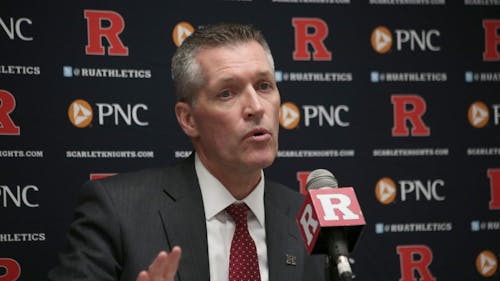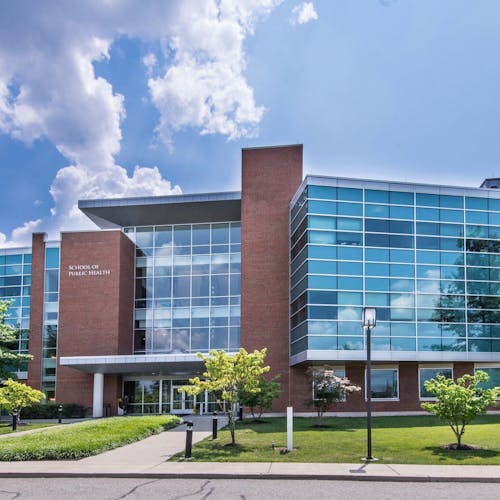With budget shortfall at $39M, Hobbs defends spending habits of Rutgers athletics

The spending habits of Rutgers athletics have been under fire this week after NJ Advance Media reported that the department could owe the University more than $20 million in loans by 2021.
The Athletics Department operates on an annual budget of approximately $80 million, according to the article. Athletic Director Pat Hobbs described the current spending as an investment.
“I view Rutgers as a turnaround, and when you turn things around it does not happen immediately,” Hobbs told The Daily Targum. “It takes an investment of time and resources, and we are making those investments so I have confidence in where we are going. But it is going to take some time.”
In four years, when Rutgers becomes eligible to receive the full benefits of Big Ten membership, the University will receive an estimated $40 million to cover salaries, scholarships and facilities — but in the meantime, the program remains under strict scrutiny, particularly by Rutgers faculty, according to NJ Advance Media.
On Friday, the Rutgers Faculty Council voted to pass a resolution, publicly deploring the Athletic Department’s spending.
The faculty council works side by side with the Office of the Chancellor to offer guidance and advice. In their document, they pointed to the most recent NCAA financial report to show that the fiscal situation is moving in a downwards trajectory.
“The athletics program’s financial situation remains a matter of very serious concern: Clearly, the program has failed to meet its financial targets for expenditures, revenue and deficit reduction — and there is a substantial likelihood that athletics will continue to drain large amounts of resources away from the academic mission of the University,” the resolution reads.
What follows is a call for the Athletic Department to undergo a review by an external party, cut its “chronic deficit spending” and make its financial plan available as quickly as possible.
Hobbs said that while he understands the concerns being raised, he wishes the conversation could have been initiated in a more productive manner.
“I thought things could have been done in a bit more collegial way, perhaps through a letter rather than a resolution,” Hobbs said. “But unfortunately, that was the way it was done. It is unfortunate because a belief over the last 16 months (is that) we have been able to change the narrative around athletics, and things like this raise a new concern for donors and potential sponsors.”
A portion of the program’s current expenditures are transitionary, Hobbs said. The department is still in the process of paying $3.2 million in severance for Julie Hermann and Kyle Flood, while also covering the initial costs of becoming a member of the Big Ten.
“The real problem in athletics is that while we always look at expenditures, the thing we need is to grow revenue as we go forward. And so that is what the strategic plan will be about, is how do we ensure the success of our programs, grow revenues in a way that we no longer rely on the University to the extent we have been relying on the University,” Hobbs said. “And that takes time to put that together, and we are at work doing that, as I said.”
Hobbs’ strategic plan includes improving the department’s financial analysis. He said he is in the midst of hiring a new chief business officer and chief marketing officer.
The Big Ten Build plan also falls under the department’s new strategy. This plan — particularly the construction of the new athletic training center on Livingston campus — was a primary point of concern for the faculty council.
“I am sort of surprised with the language of that resolution because we began the Big Ten Build just 12 months ago and a typical fundraising campaign extends over three, five or even seven years,” Hobbs said. “We set out to raise $100 million, and raised $72 million of public and private support in the first year alone, and that should be applauded — not a matter of concern. The Big Ten Build is an example of what needs to happen when you turn an organization around and when you do the things that will bring success.”
Rutgers athletics broke ground on the new center in October and Hobbes said the project will help with the recruitment, retention and general performance of student athletes.
A successful athletic program also contributes to the overall student body because it allows them to attend athletic events for free and associate themselves with a well-established University name, Hobbes said. This is why he said the money collected in student fees makes sense.
“I consider myself an academic who is leading an athletic department that can make some significant contributions to what we do as a University overall. When athletics is doing things the right way, then it is a tremendous beacon for your university,” he said. “It can be a tremendous asset, a tremendous enhancer of the university, and that is what I am determined to do for Rutgers University, because Rutgers deserves that, and I believe we will achieve that.”
This was the basis of Gov. Chris Christie’s (R-N.J.) statement on Rutgers athletics, which came just one day after the faculty group’s denouncement of the department.
“Governor Christie is proud of Rutgers membership in the Big Ten and the outstanding leadership being provided by Athletic Director Pat Hobbs and the outstanding coaches and staff he had brought in during his brief tenure,'' one of Christie’s spokesmen told NJ Advance Media on Saturday morning. “It only makes sense that there must be an investment as we ramp up to full financial membership in the Big Ten.”
With state appropriations determined and the fiscal budget being drafted, Hobbs stressed the importance of unity within the University.
The department is at a turning point, and without the Rutgers community standing shoulder to shoulder, he said it will be difficult for the school to get where it needs to go. Despite the current climate, Hobbs said he is incredibly grateful for the support the students have offered throughout the transition.
“I want to thank our students, they have been tremendously supportive of everything we are trying to do,” he said. “They are really excited about our programs and where we are taking them so now is a good opportunity to say thank you to our students."



